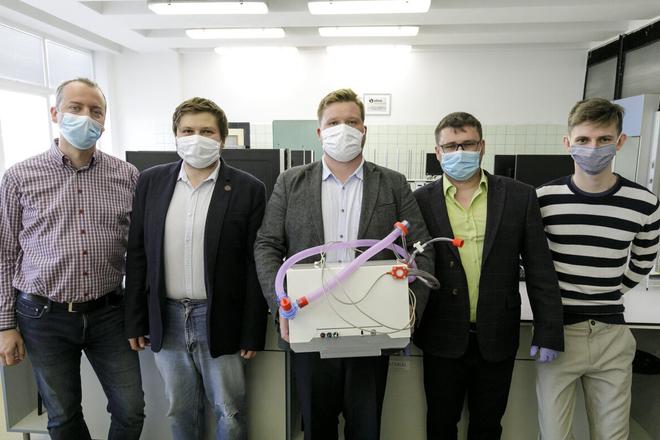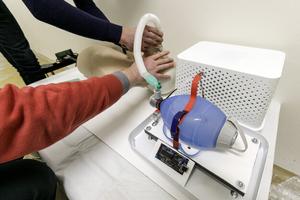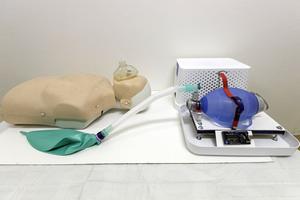Our paywall policy:
The Slovak Spectator has decided to make all the articles on the special measures, statistics and basic information about the coronavirus available to everyone. If you appreciate our work and would like to support good journalism, please buy our subscription. We believe this is an issue where accurate and fact-based information is important for people to cope.
The alternative volume-regulated portable lung ventilator Q-vent, constructed by young Slovak scientists, is being mass-produced.
The ventilator, ensuring so-called bridging ventilation in conditions where it is not possible to use a professional device, was created at the Physical and Theoretical Chemistry Department of Comenius University's Faculty of Natural Science by postgrad students Samuel Furka and Daniel Furka; senior doctor of the department of the outpatient chemotherapy of National Oncologic Institute, Patrik Palacka; and student of the Medical Faculty of the UK, Dalibor Gallik.
They offered the device as humanitarian help
They offered their ventilator immediately after mass production started in Italy and other countries as humanitarian help organised by the Foreign Affairs Ministry, the TASR newswire reported.
The Q-vent is able to ensure the breathing of a relaxed and intubated patient for 24 hours and in portable mode for six hours. It regulates the volume of breathing, the inhalation and exhalation rate, and the number of breaths per minute.
The sensor sends out an alarm when the patient starts waking up or breathing spontaneously. The system of adjustable 3D-printed vents provides for the separation of inhalation and exhalation mixture, maintaining pressure in the lungs after exhaling.
Ventilators are made from a special material developed at the department of Comenius University that prevents biofilms from emerging.
The filter contains a UV sterilizer and a special filtering ceramic inset printed on a 3D printer by Marián Janek's team from the Slovak University of Technology in Bratislava.
The inset is warmed up to a high temperature and with with UV sterilisation it destroys pathogens passing through the filter with the exhaled air.
Obtaining money is harder than the development itself
The scientific team financed the development of the device from their own sources. The mass production of the ventilators started thanks to the support of the faculty and the Koval Systems and Embasys companies.
The creators of the project pointed out that to continue with production they will need financial support. They have already asked several institutions.
“It is startling that the obtaining of minimum financial support for a project representing Slovakia in an international context is much harder than the entire process involving the development, testing and launching of the device's mass production,” Samuel Furka said.
The creators believed that Slovak government institutions will support the mass production of the developed ventilator so it will be possible to test the Q-vent in real clinical conditions.
They also believe that with the support of Slovak regulators, they will be able to ensure an extraordinarily quick certification of the device.






